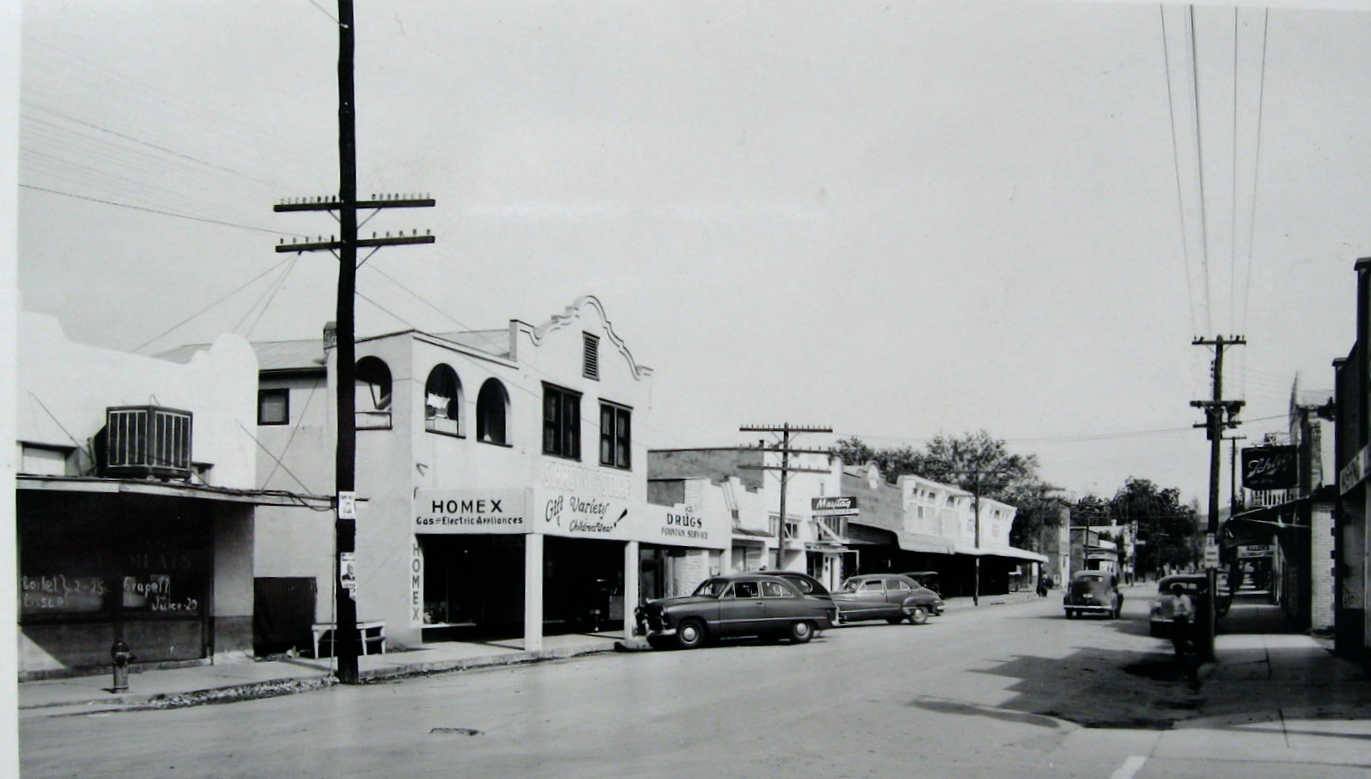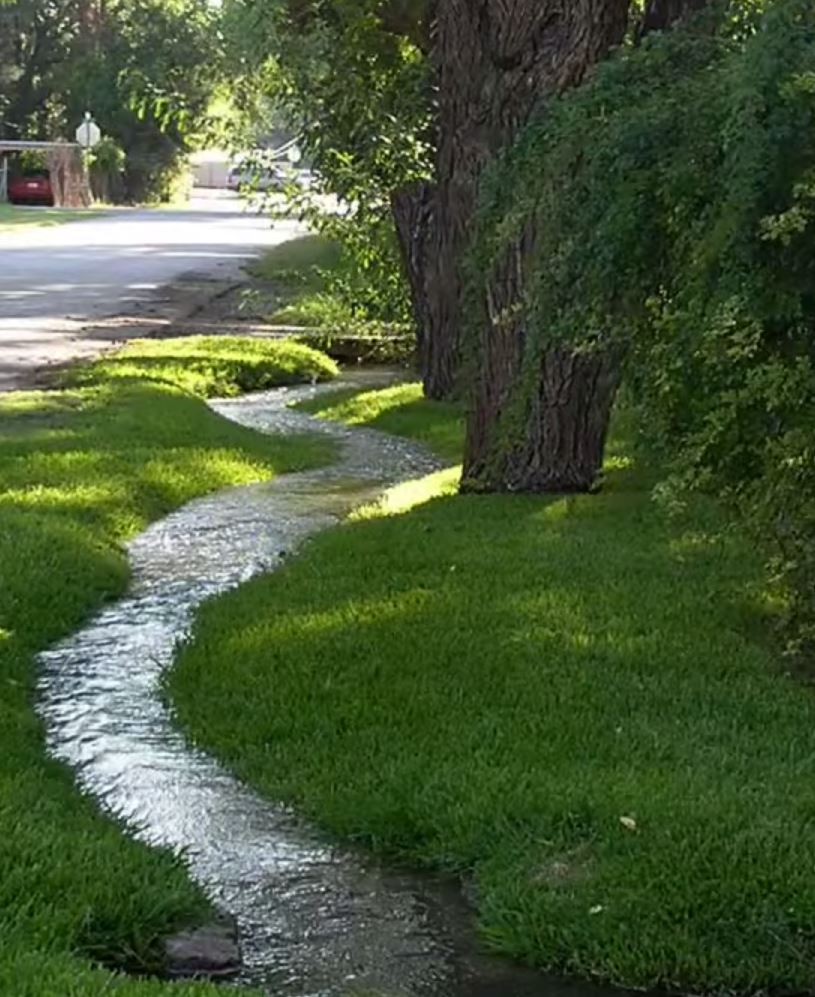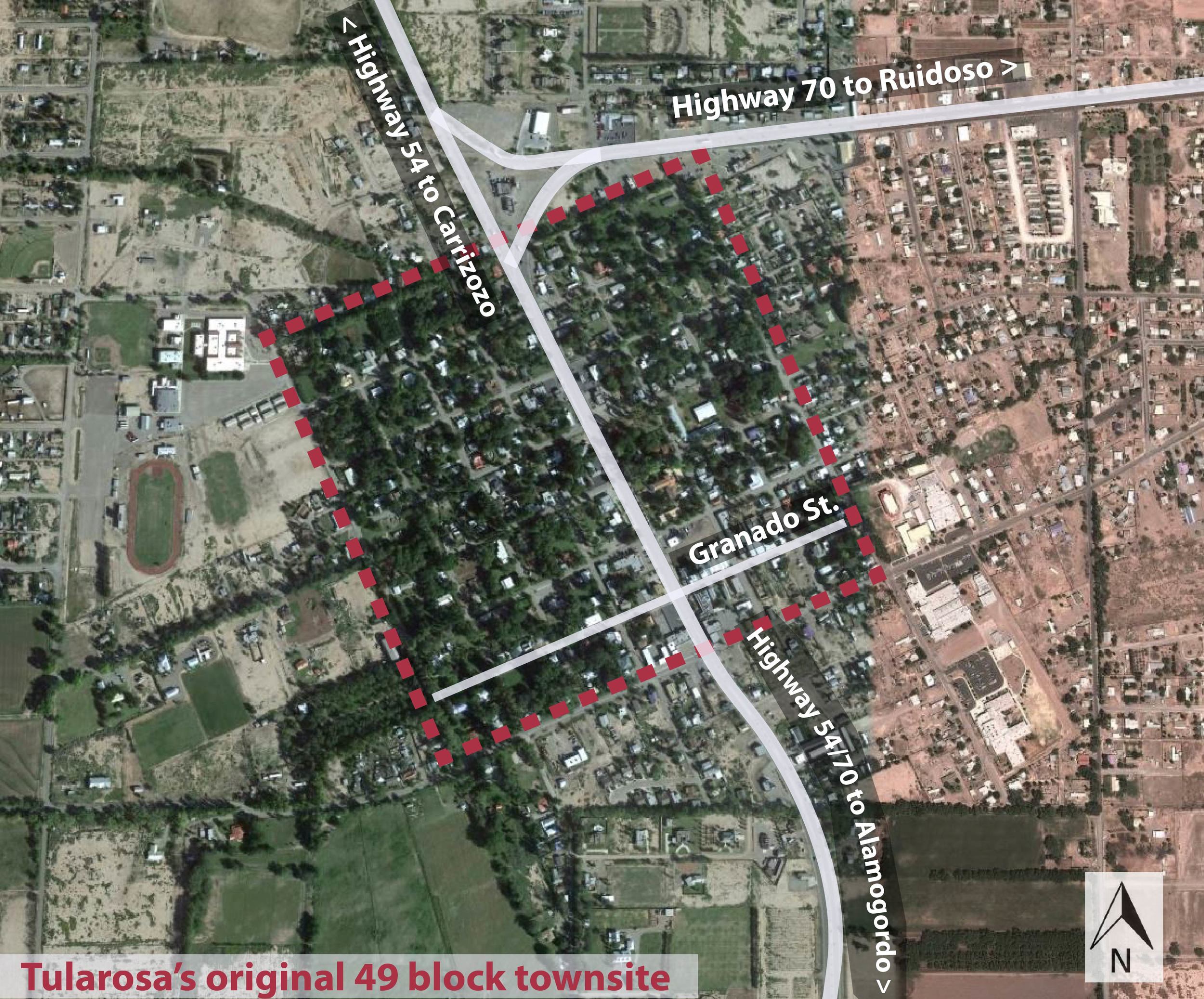THE HISTORIC VILLAGE OF TULAROSA
Tularosa's name is from the Spanish description for the red or rose-colored reeds growing along the banks of the Rio Tularosa. The Tularosa river, which runs along the north side of the village, attracted the original farming settlers as a water source in the arid desert. Settlers attempted unsucessfully to establish a settlement in 1860. Two years later, Hispanic farmers from the Rio Grande valley succeeded in settling the area. In 1863, the Village of Tularosa was formally established and was mapped with forty-nine blocks.
(The information above is paraphrased from the official village website. Please see www.villageoftularosa.com/visitors/history.html for more information about Tularosa! )































Significant Locations and Features
The Tularosa Original Townsite District – This area consists of the original forty-nine blocks on 1,400 acres and was declared a historic district and recorded in the National Register of Historic Places.
Acequia System – Tularosa’s original ditch irrigation system provides water for the village’s street trees and gardens that make the village an oasis in the desert. Most of the original acequia system remains intact.
St. Francis de Paula Catholic Church – This striking adobe church was founded in 1865 and is a block away from the intersection of Granado Street and the highway.
The Red Brick Schoolhouse – The large schoolhouse was built in 1917 and was designed by the famous architect Henry Charles Trost. It is located at the intersection of Granado and 1st street.
The Old Tularosa Bank – This property at the intersection of 3rd street and Granado has a hundred-year-old original iron vault, a pressed tin ceiling, and impressive brick details.
La Tienda Vieja Antique Store – This wild west storefront property was built prior to 1860 and was originally a general store and has also served as a village post office. It was restored in 1980 and is on the National Register of Historic Buildings.
The Old Tularosa Hotel – This hundred-year-old hotel has a tall Frontier-Victorian façade. It was built in conjunction with the expansion of the regional railroad lines. It is located at 311 Granado Street.
The Fine and Dandy Store – This striking restored property has pressed-tin ceilings and original old west storefront details. It is on the National Register of Historic Buildings and is located at 312 Granado Street.
The Tulie Café Barroom – This building has served as a barroom for most of the past century. It features a beautiful hardwood hand-carved bar that was designed in the early 1980s by architect George Pearl, for whom UNM’s George Pearl Architecture Hall was named.
Other – The Village of Tularosa has multiple other historic buildings and features that we will periodically add to this list.
(This list was researched by The Greater Tularosa Foundation, 2014. If you have additional information or changes, please let us know)
copyright 2013 - 2015, The Greater Tularosa Foundation
